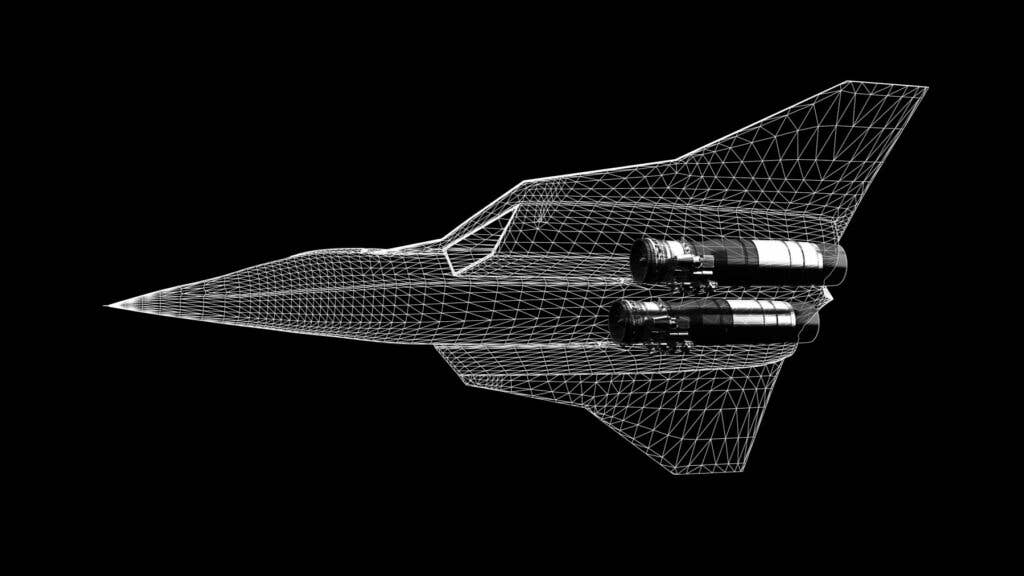On December 16, the French Directorate General of Armaments (DGA) granted a contract to build flying demonstrators for a Future Combat Air System (FCAS).
The historic agreement, worth 3.2 billion euros ($3.4 billion), will span roughly three and a half years and entail work on an FCAS and its component demonstrator.
European aircraft manufacturer Airbus, France’s Dassault Aviation, Spain’s Indra, and several subcontractors will cooperate on the Future Combat Air System.
The latest development comes one week after the UK, Japan, and Italy declared they would collaborate to create a new fighter jet as part of the Global Combat Air Program (GCAP).
The FCAS program, described by its participants as a “system of systems” centered on a sixth-generation fighter jet, comprises several subprograms, or “pillars,” which had to be allocated among manufacturers.

This distribution stalled the project for about a year, with governments and manufacturers arguing over competing industrial interests. The French General Directorate for Armament (DGA), the French government’s defense technology and procurement body gave out the latest contract on behalf of the three nations.
The first flight is scheduled for 2029, two years later than initially planned, and will mark the formal start of the program. “This is a major step forward with an important project to protect our strategic interests,” French Defense Minister Sebastien Lecornu said in a statement.
In a joint statement, Dassault Aviation, Airbus, Indra, and Eumet expressed their appreciation for this significant development, demonstrating France, Germany, and Spain’s commitment to creating a powerful, ground-breaking, entirely European weapon system to meet the operational requirements of their respective militaries.
The FCAS contract announcement notes that “in-flight demonstrations” are anticipated to be accomplished by 2028 or 2029. However, the type of flying demonstrators created for FCAS is still unknown.
The FCAS might also incorporate drones, air-launched weaponry, and perhaps other aerial systems in addition to some manned fighter prototypes representing the NGF.
New Generation Fighter (NGF)
The contract covers what is referred to as FCAS Phase 1B, which will comprise additional research and technology (R&T) elements in addition to the actual flying demonstrations and associated subsystems.
As previously mentioned, the work will be done by the following companies: Dassault Aviation of France, Airbus’ German branch, Indra of Spain, and their respective industrial partners.
The New Generation Fighter (NGF) jet’s engine will be manufactured by Eumet, the European Military Engine Team, a major industrial player with its headquarters in Germany.
The work necessary to achieve the final FCAS goal is carried out by the Next Generation Weapon System (NGWS) program, which includes completely new technology, such as the New Generation Fighter.
The manned fighter can operate from a carrier as well as land. The core of FCAS is NGF, but it’s unclear how this will materialize. A full-scale mock-up was presented at the 2019 Paris Air Show.
However, it is probably merely indicative of one of the concepts that could be used in the project. Also, the requirement for NGF, or a version of NGF, to be able to operate from French Navy aircraft carriers will present new design issues.
It was previously reported that the NGF would reportedly be too big to fit aboard the Charles de Gaulle, the French Navy’s current conventionally powered aircraft carrier. Compared to a fully equipped Rafale, which weighs about 27 tons, the new fighter is expected to weigh roughly 33 tons.
According to the German Ministry of Defense, the NGF is intended to have stealth features, mainly to lessen the possibility of detection by long-range adversary airspace surveillance.
The ministry also highlights the need to strike a balance between high stealth and the best possible aerodynamics while describing NGWS, implying that low observability, maneuverability, and kinematic performance will likely be subject to some tradeoff.
Manufacturers and authorities will have to meet at the negotiating table for Phase 2, including the demonstrator’s production, assembly, and flight tests. Furthermore, Phase 2 of the program will require an extra €8 billion in funding, which must first be authorized by the Bundestag, Germany’s lower parliament.
Nevertheless, the project is essential to integrating European military capabilities and reducing the continent’s reliance on American hardware.
- Contact the author at ashishmichel(at)gmail.com
- Follow EurAsian Times on Google News